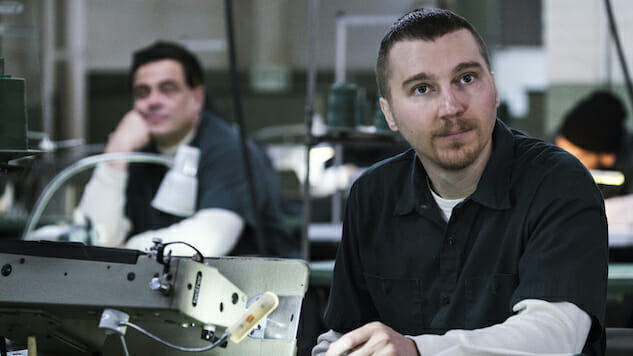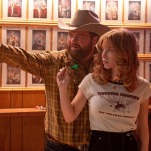Why Prison Drama Escape at Dannemora Is the Perfect Step for Director Ben Stiller
Photo: Chris Saunders/SHOWTIME
It turns out that spending more than three decades making pastiches and parodies translates into plenty of skill once it comes time to go straight. That’s what Escape at Dannemora, Ben Stiller’s dramatic TV directing debut, proves for the longtime comedy multi-hyphenate, who made his bones razzing Martin Scorsese and LL Cool J.
Stiller, who directed all seven episodes of Showtime’s limited series (in addition to serving as executive producer), has certainly developed pet themes over the course of his directing career, in his comedies (The Ben Stiller Show, Zoolander, Tropic Thunder) and off-comedies (Reality Bites, The Cable Guy, The Secret Life of Walter Mitty) alike, and Escape at Dannemora pays homage to his favorites. With a premise that has the same realistic absurdity as Dog Day Afternoon, Dannemora’s love-triangle-turned-prison-escape has plenty of unfulfilled daydreamers running amok within its genre thrills—a perfect place for Stiller to flex his chops using characters well in his comfort zone.
Inmates Richard Matt (Benicio del Toro) and David Sweat (Paul Dano) were both murderers on the Honor Block of Clinton Correctional Facility back in 2015. Joyce “Tilly” Mitchell (Patricia Arquette) was a prison employee in charge of the sewing shop who became involved with both men, eventually helping them escape. If you didn’t know it was true, it’d sound crazy. If you didn’t know it was true, Stiller’s grounded portrait of Dannemora, N.Y. and its surrounding areas—and the hokey, where-are-they-now end credits that should’ve died out long before “Today, we call them computers” became a meme—make it obvious.
Filming on location immediately sets the tone. Even when shooting the crunched Nightmare on Elm Street of metal girders, bars, fences, pipes, and benches of an frigid prison (taking plenty of his framing from cramped and confined movies like One Flew Over the Cuckoo’s Nest and Escape from Alcatraz), Stiller wonders in big, steady establishing shots, bereft of any colors but greys and blues. Parking lots, prison complexes, a town with the promise of mountains on the horizon: Stiller is staggered that this small collision of three assholes can make any amount of noise in the grand scheme of things. He tackled a similar visual theme in his 2013 film The Secret Life of Walter Mitty, with a typically infinitesimal actor juxtaposed against intense Icelandic beauty. Here, the beauty is smaller in scale because the ambitions are lower, reduced by the expectation-tempering realities of prison life.
Establishing routine and boredom—waking up next to your slobby husband, coming to work, banging a con, and watching NCIS back at home—works just as well outside as in. Like Better Call Saul’s masterclass in mundanity, Dannemora erects a barrier between the prisoners that want freedom and the civilians who squander it. Cramming prison workers into a salon, a Chili’s, or a darkened museum theater in their downtime is as insulting to the prisoners as it is depressing for the employees. Stiller loves to stifle, especially when that restrained emotion finally breaks free.
The end of the first episode features a shot / reverse shot sequence of Tilly and a dapper man who looks startlingly like del Toro getting into his car with two younger women from a bar. The back and forth, which slurs into dreams with slo-mo, is tight on Tilly’s face and hair while taking in all of the man (his car, his clothing, his posture) until he acknowledges her stare and doffs his cap. That moment gets a tighter shot, playing into Tilly’s fantasy—the escapist wont that’s led to her affair with Sweat—and causing her to smile at its potential. Yeah, she’s a babe. A romantic, desirable babe. She could be picked up by a handsome stranger. Then the car door shuts and she’s thrust back to reality. A cold reality, where she’s married to someone who took her to a War of 1812 documentary and convicts are using her to escape. Indeed, the escape itself is mind-numbing as well. Hacking and sawing and hammering away at metal, brick, and concrete is a job of inches: every night, feeling the vibrations run up the sledgehammer into your arm, making no visible progress. When Stiller gets his own Shawshank moment, it caps an energetic tracking shot with a bittersweet digestif that bottles the whole thing into a beautifully restrained sequence.
-

-

-

-

-

-

-

-

-

-

-

-

-

-

-

-

-

-

-

-

-

-

-

-

-

-

-

-

-

-

-

-

-

-

-

-

-

-

-

-








































